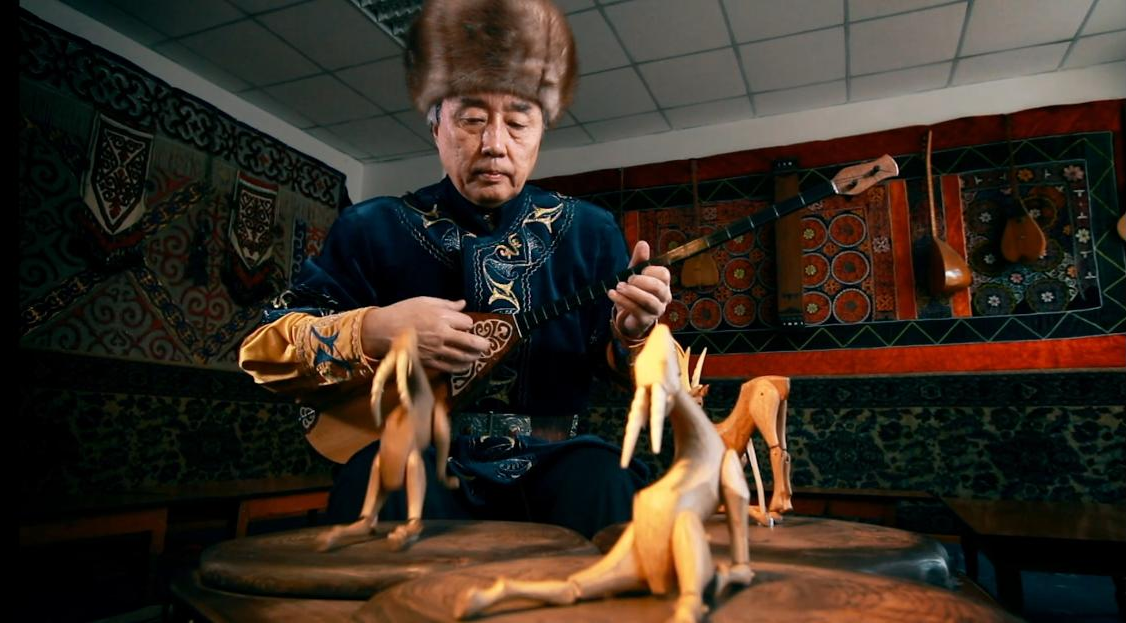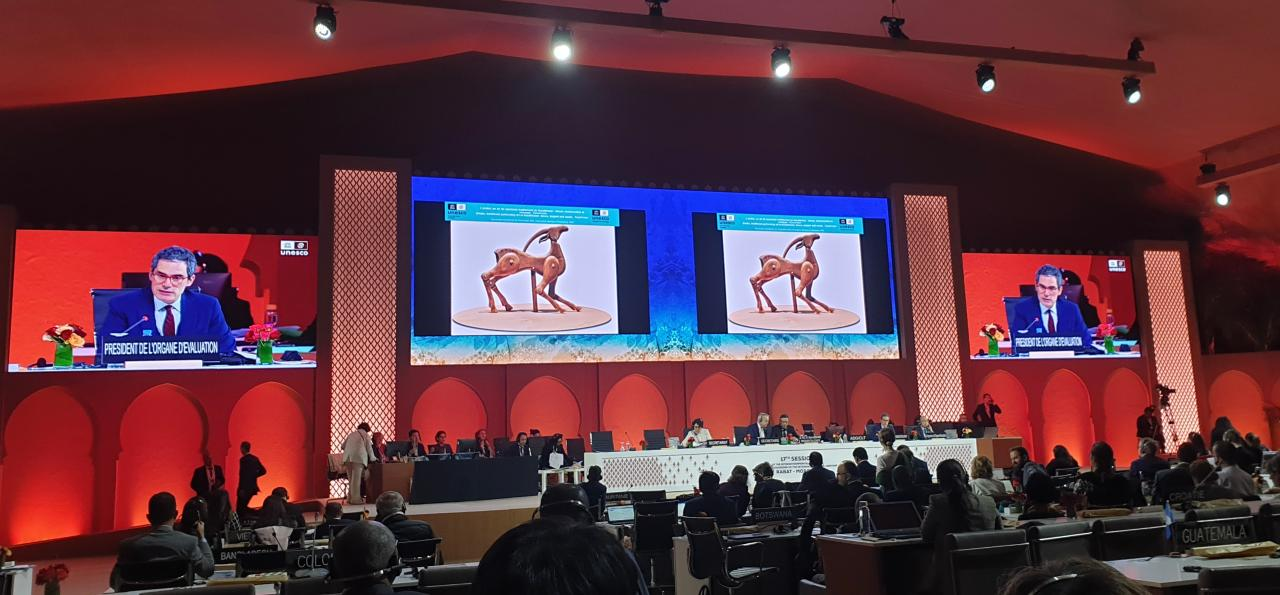ASTANA – The Kazakh ancient performing art Orteke and Kozhanassyr’s oral folklore were added to the United Nations Educational, Scientific and Cultural Organization’s (UNESCO) Representative List of the Intangible Cultural Heritage of Humanity during the 17th session of the Intergovernmental Committee for the Safeguarding of the Intangible Cultural Heritage in Rabat, Morocco held on Dec. 1, reported the Foreign Affairs Ministry’s press service.

A musician puppeteering a doll while playing dombyra – the art of Orteke. Photo credit: press service of Kazakh Foreign Ministry.
The 17th session of the intergovernmental committee reviewed a total of 46 nominations. The representative list aims to raise international awareness of various traditions and cultures without imposing standards of superiority or exclusivity.
Orteke is an art that combines applied arts, music, dancing, and puppeteering. A thin string connects a little wooden doll to the puppeteer’s fingers, generally in the shape of an argali or other Kazakh steppes animal. When the puppeteer plays the dombyra (Kazakh musical instrument), the movements of the fingers make the doll dance. The trick is to make the doll dance gracefully while playing a song.

he Kazakh delegation presenting their entries at the 17th session of the Intergovernmental Committee for the Safeguarding of the Intangible Cultural Heritage in Rabat, Morocco. Photo credit: press service of Kazakh Foreign Ministry.
The oral folklore of Kozhanassyr, also known as Khoja Nasreddin, encompasses satirical miniatures, jokes, and folk tales, portraying Kozhanassyr as an anti-hero, a vagabond, a freethinker, a rebel, a foolish man, and even a philosopher, mocking human vices, avarice, sanctimony, and hypocrisy. Azerbaijan, Kazakhstan, Kyrgyzstan, Tajikistan, Türkiye, Turkmenistan, and Uzbekistan all submitted their entries.
There are now 11 entries on the UNESCO Representative List that cover Kazakh traditions such as dombyra instrumental compositions, Kazakh wrestling, the asyk sports, and springtime horse-breeding practices. The remaining seven nominations include yurt making, musical improvisation, flatbread manufacturing, Nauryz festivals, Korkyt ata legacy, falconry, and the togyzkumalak games.


